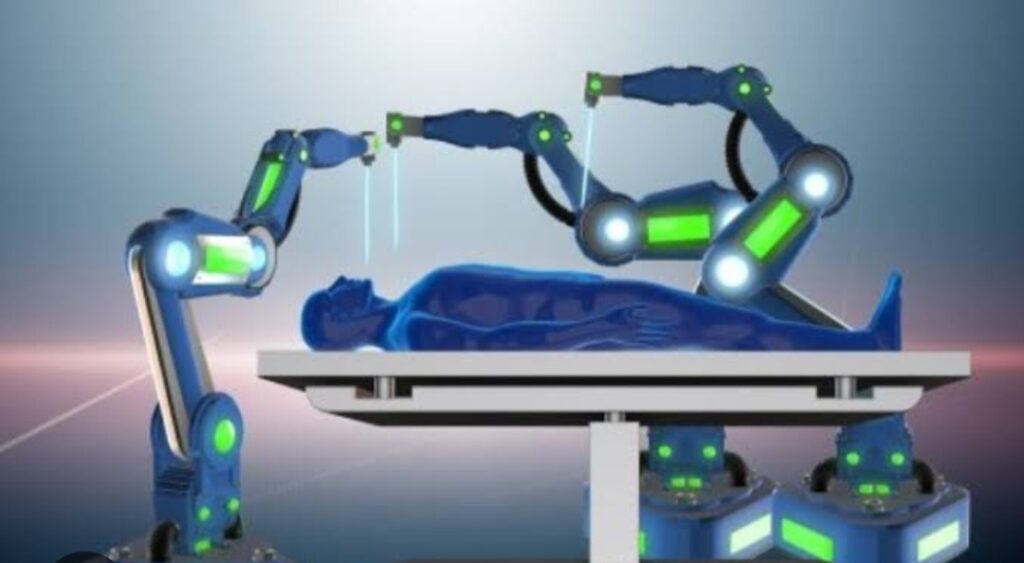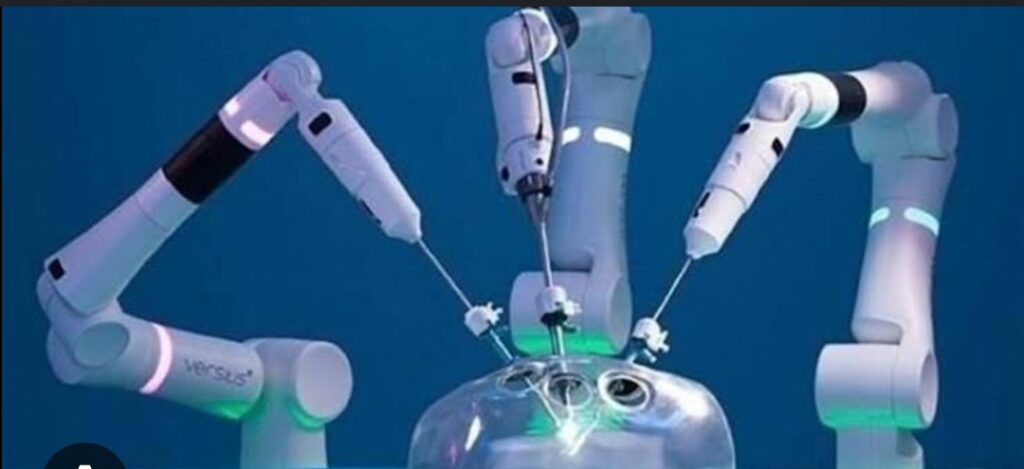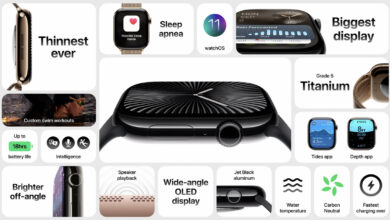“Revolutionizing Surgery: The Future of Surgical Robots”

Surgical robots, such as the “da Vinci” system, are revolutionizing surgery with their precision and efficiency.
Here’s how they work and what they offer:
1. Precise Control: Surgical robots provide precise control over surgical instruments, reducing the likelihood of errors and increasing procedural accuracy.
Surgeons operate the robot using specialized control units.
2. Minimally Invasive: Robotic systems often use laparoscopic techniques, where instruments are inserted through small incisions.

This minimizes the size of incisions and the invasiveness of the procedure compared to traditional surgery.
3. Enhanced Vision: Robots offer 3D magnified vision, helping surgeons see fine details inside the body.
This enhanced vision allows for more precise and complex procedures.
4. Reduced Pain and Recovery Time: Due to smaller incisions and less invasive techniques, patients experience less pain post-operation and recover more quickly.
5. Expanded Procedure Range: Robotic systems can be used in a variety of procedures, including cardiac surgery, oncology, urology, and more.
The “da Vinci” system is one of the most well-known systems in this field, used in hospitals and medical centers worldwide to improve surgical outcomes and enhance patient safety.




